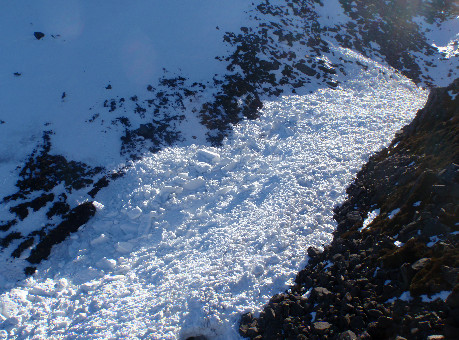It is rarely essential to negotiate an avalanche-prone slope. It is usually possible to find another way, or retreat. 90% of avalanches involving human subjects are triggered by their victims.
If it is essential to proceed, the following should be borne in mind:
A free training resource is available to help hillwalkers, climbers, mountaineers and skiers understand and avoid avalanche dangers in the hills.
Aimed at individuals making critical decisions in the winter mountains, the free digital version of the ‘Be Avalanche Aware’ planning tool is clear and easy to follow, equipping people travelling in mountain terrain with practical information and advice to make them more aware of the avalanche risks and the factors that influence their own planning and journey decision making.
The online avalanche awareness training initiative has been created by The Snow and Avalanche Foundation of Scotland (SAFOS), with development support from member organisations Mountain Training Scotland and Glenmore Lodge.

The Chalamain Gap, deeply filled with avalanche debris
A terrain trap is a topographical feature on the mountainside. Classically it can be a depression, concavity or flattening, such as a gully, corrie basin or abrupt change of slope angle which would allow avalanche debris to accumulate rather than flow away downhill.
Examples in the Scottish mountains would be Coire na Ciste on Ben Nevis, Coire na Tulaich on Buachaille Etive Mor, the Chalamain Gap and the moraines in Coire an't Sneachda in the Cairngorms and G&T Gully on Aonach Mor. Four of these locations have been the sites of multiple avalanche burial fatalities as a direct result of their being terrain traps.
Since shovelling takes such a long time, deep burials have a very low chance of survival. Even a small avalanche off the side of a small gully can have significant consequences if the debris has nowhere to run to. Avalanche danger will rise and fall throughout the season as the snow pack and weather conditions varies, but the topographical structure of the mountainous terrain that you choose to travel through remains constant.
The key to avoiding terrain traps is to make good route choices: